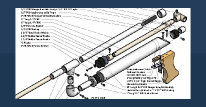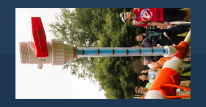Lanard Max Shot
Coupler modification, noise reduction, and improved reliability
Materials:
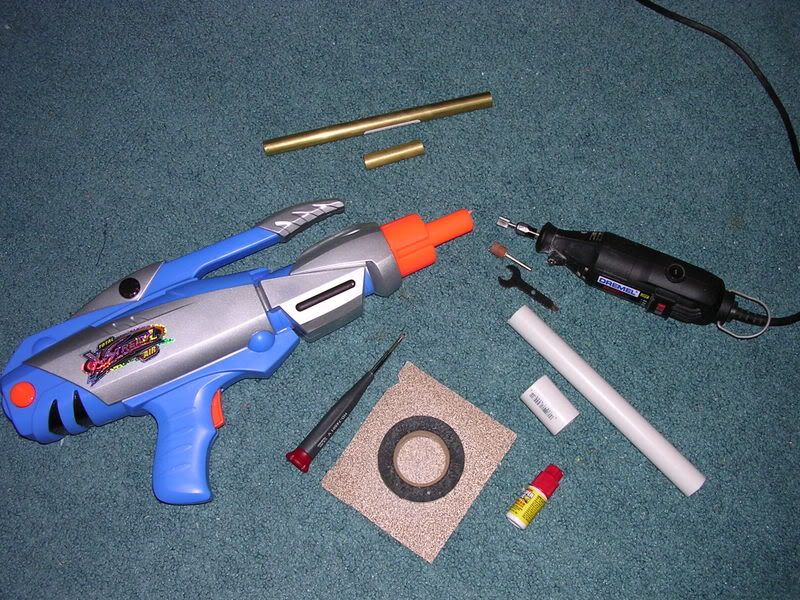
• 1 Lanard Max Shot
• Dremel tool with a rotary cutter and a sanding bit (cut-off wheel required but not pictured)
• 1 8-inch section of 9/16" O.D. brass tubing
• 1 2-inch section of 17/32" O.D. brass tubing
• 1 Philips-head screwdriver
• 1 roll of electrical tape (E-tape)
• 1 7 7/8-inch section of 1/2" PVC tubing
• 1 1/2" PVC coupler
• Super glue (or epoxy) of your choice (if using epoxy, wait for the mixture to harden before reassembling the weapon, and wait for full curing before test firing)
• Sandpaper (40-100 grit) (for touch-up sanding, so this is not absolutely needed)
Not pictured:
• Silicone lubricant
• Foam Backer Rod
• Box cutter or utility knife
• 1 Foam Rubber ring
• Hacksaw (use in lieu of Dremel cut-off wheel if the latter is unavailable)
• Magic Marker
• 2 1/4-inch sections of 1/16" O.D. Aluminum rod
Procedure:
1. Open the Max Shot. There is a large screw beneath the circular orange cap towards the rear of the gun. To remove this cap, place two prongs of a claw hammer against either the left or right sides of the cap (assuming that the gun is horizontal) and dig in slightly, then pop the cap out as one would a nail in the same way.
The internals:

2. Unscrew the clamp holding the rear of the plunger tube down. Remove the plunger tube and the large orange cap that serves as the muzzle of the gun.
3. Take the plunger tube and cut off the thin white tube, leaving approximately 1/8" of this tube where it meets the orange cap. Sand down the four wings on the cap.
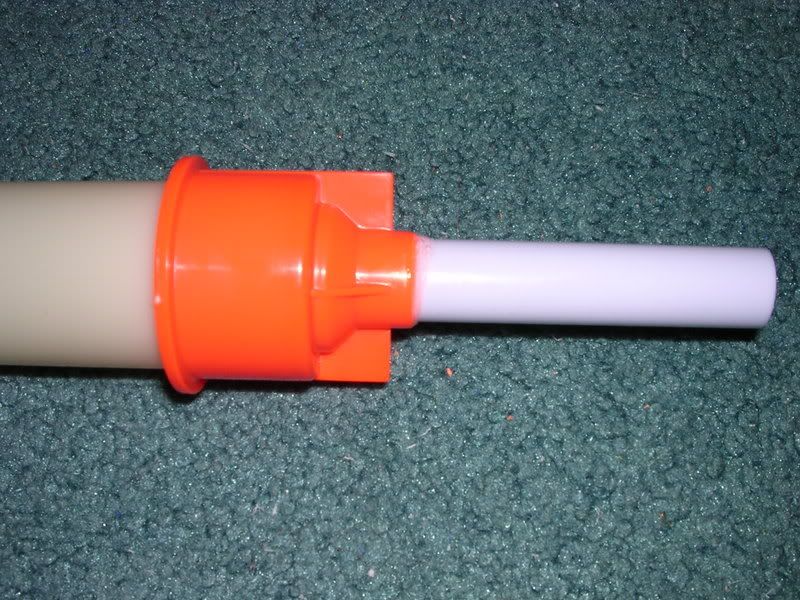 Before
Before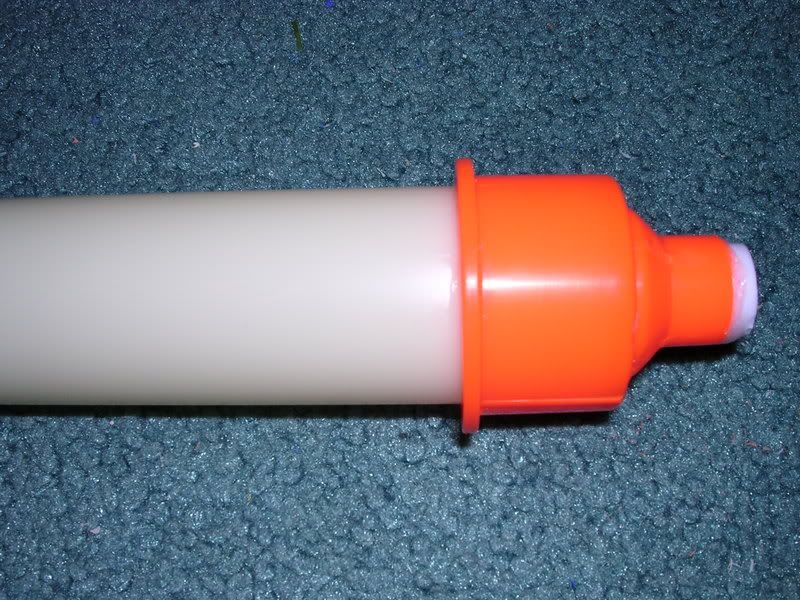 After
After4. Sand out the inside of the thin white tubing using the rotary cutting bit. Thoroughly wash the inside of the plunger tube from any PVC shavings and grit and dry it. Wrap the very bottom of the 2-inch 17/32" brass tube section (not the open base, but the lowest possible point on the outer wall) in electrical tape (E-tape) until it is snug in the white tube. Insert 3/4" of this end into this tube. Seal the seam where the white tube ends and the brass becomes visible with the super glue or epoxy.
5. Place the two halves of the shell back together (do not replace the internals or screws) and hold the PVC coupler on the muzzle so that one end of the coupler and the bore are concentric. Trace the outline of the coupler onto the plastic using the Magic Marker and cut down the plastic inside the traced arcs using the Dremel and rotary cutting bit. Do not cut away the marks themselves to preserve the tight fit on the coupler.
After sanding (the Magic Marker arcs are still visible):
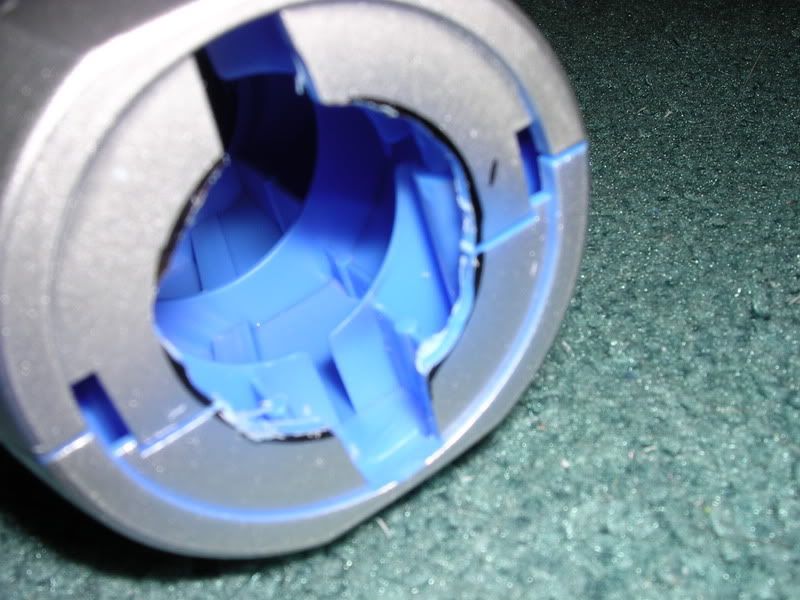
6. Wrap the thin neck of the orange cap on the plunger tube in electrical tape (E-tape) until the PVC coupler fits snugly over the layers of tape. Cut off the excess tape (the portion that is hanging over the brass but not the orange cap) away with the box cutter and discard. Fit the coupler over the tape and seal the seam where the bottom of the coupler meets the flared portion of the cap with the super glue or epoxy. To ensure that the coupler is centered around the brass, slide the section of 9/16" brass tubing over the very end of the 17/32" brass tubing and then slide the section of 1/2" PVC tubing over both pipes and into the coupler. Bevel the inner and outer lips of the brass pipe.
The coupler after being glued onto the plunger tube cap and drying in this position:
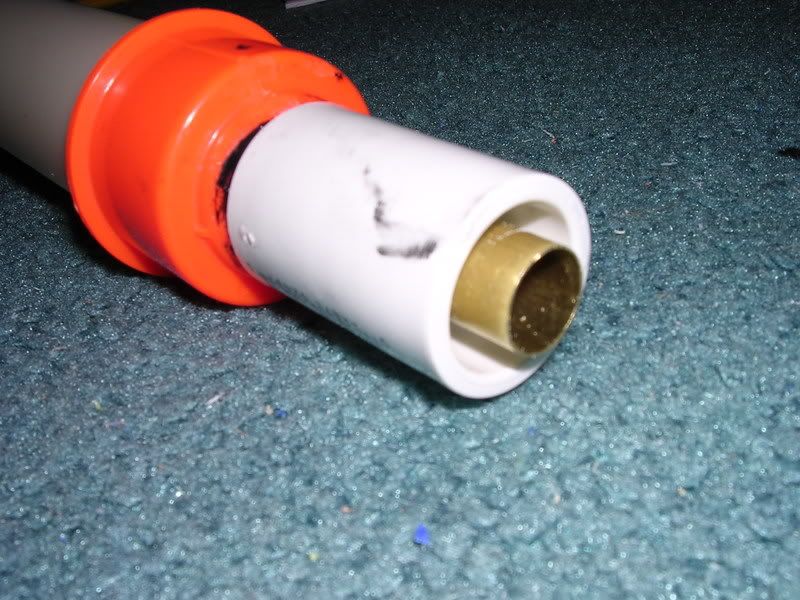
7. Remove the 8-inch section of 9/16" brass tubing and the 1/2" PVC tubing from the end of the plunger tube. Wrap the outside of the 9/16" brass pipe with electrical tape (E-tape), except for a 1/8" section at one end of the tube, until it fits snugly in the 1/2" PVC tubing. Slide the brass pipe into the PVC tube until the un-taped 1/8" section is the only portion protruding from the PVC. Seal the dead space between the brass tubing and the PVC on both ends with the super glue or epoxy. Bevel the inside lip of the protruding brass pipe. This forms the barrel of the gun.
The rear end of the completed barrel:
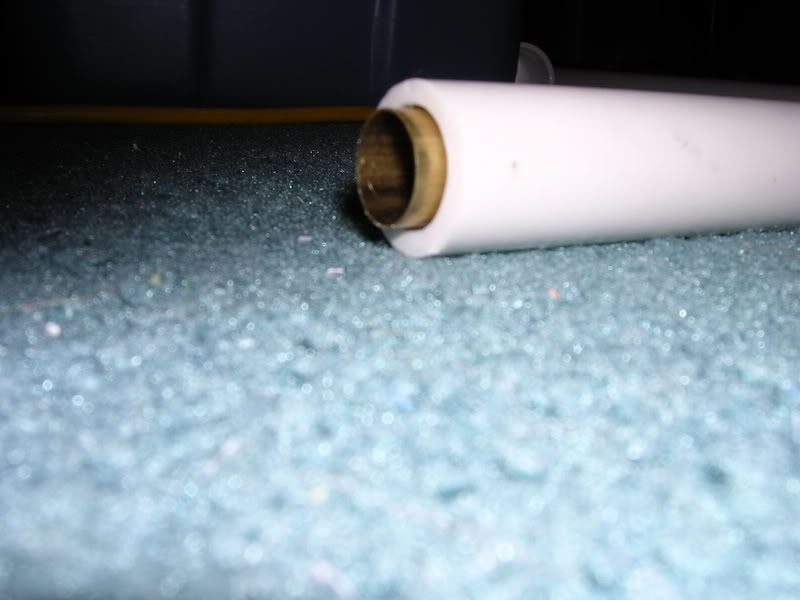
8. Fill the dead space in the front of the gun (on both halves of the shell) with cut sections of Foam Backer Rod (FBR). Before replacing the plunger tube, ram the foam rubber ring into the very front of the plunger tube and spray the sides with the silicone lubricant. Slide the plunger assembly back and forth a few times to evenly distribute the silicone spray. Replace the plunger tube and reassemble the weapon, referring to the picture under Step 1 for part placements. Before closing the gun, glue or epoxy one 1/4" aluminum rod into the rear-most portion of the raised oval that the trigger's pivot pin is seated in. Do this on both halves of the shell. Reassemble the weapon.
The Foam Backer Rod (FBR) sections that aid in reducing the acoustic signature of the weapon:
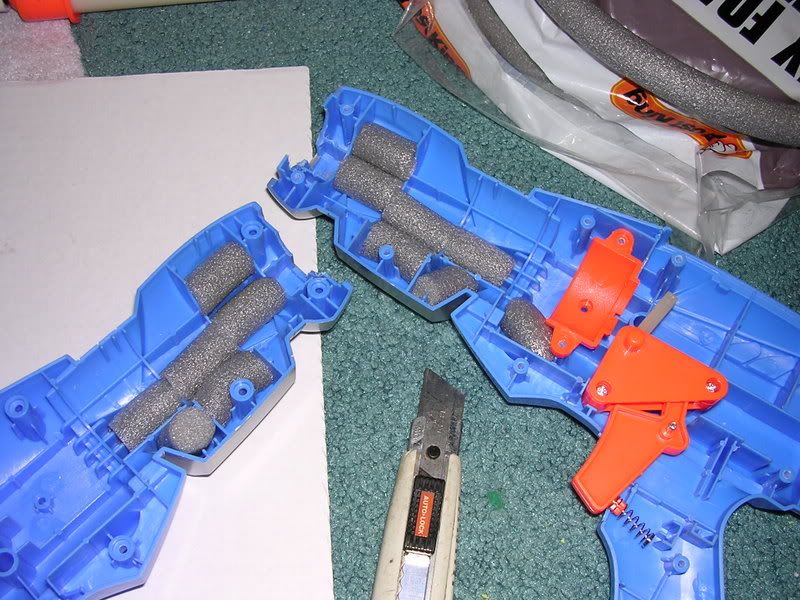
To load, cock the plunger (pull up on the lever on top of the gun and return it to its resting position), place a Stefan dart or a Converted Dart Tag Stefan (CDTS) in the 17/32" stub, pull the barrel over the stub and into the coupler, aim, and pull the trigger.
The completed gun, shown with a Converted Dart Tag Stefan (CDTS):
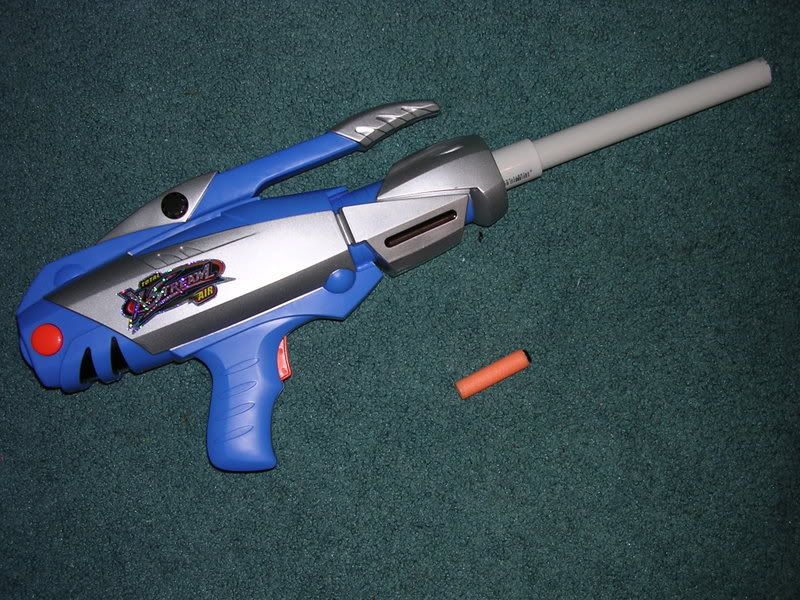
Ranges:
Ranges average at least 100' (flat shot) with this mod. Once I have a chance (I.e. no winds, large open area), I will test again and take a larger sample and record as much as possible about the shots. (I only had a 100' measuring tape, but most shots go past this mark.)



